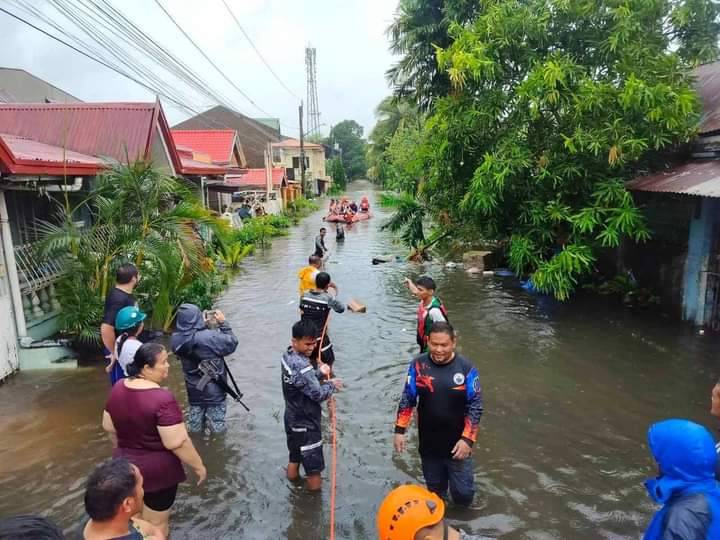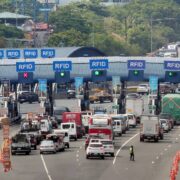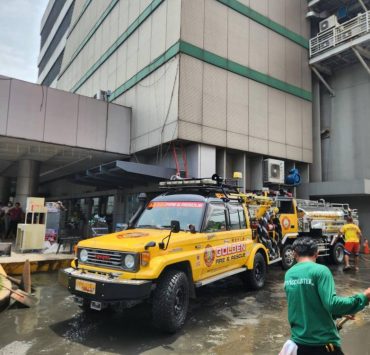Dealing with floods (again, and again, and again)

The Philippines, Luzon in particular, was hit hard by Typhoon “Carina” recently and as usual, we found ourselves navigating Noah’s Ark-level flooding similar to Ondoy. While not as extreme, Typhoon Carina still unleashed significant rainfall, logging in at around 300 millimeters over a similar period.
Yet again, Filipinos showcased their resilience. We saw industry friends like Sam Liuson use their 4×4 cars to help rescue some stranded citizens. Some celebrities helped out. But typical Pinoys, we saw people making the most of the situation by floating, swimming, and using jet skis. What else can you do when nature decides to play wet and wild?
But let’s get serious for a moment. What happens in a flood? Here’s the lowdown:
Dangers from the water
Floodwater isn’t just a giant swimming pool. It’s a toxic cocktail of hazards. Here’s what you need to watch out for:
- Leptospirosis: This nasty bacterial infection is spread through rat urine. Avoid wading through floodwaters if possible.
- Gastrointestinal infections: Floodwater can be contaminated with sewage, so avoid consuming anything that comes into contact with floodwater.
- Skin infections: The mix of dirt and bacteria can cause skin issues. Clean and disinfect any exposed skin thoroughly.
- Chemical contaminants: Floodwaters can contain hazardous chemicals from industrial runoff. Avoid contact as much as possible.
- Debris, bugs, and everything else floating with the water.
What to do when exposed
- Be Proactive: During the rainy season, take your vitamins and rest responsibly. After exposure, double your dose of vitamin C and seek medical help If you develop symptoms like fever, diarrhea, or unusual skin rashes.
- Keep your vaccinations up to date, particularly for tetanus and hepatitis
Essential items to have in your car:
- Emergency Kit: Flashlight, first aid kit, essential medications, and a whistle.
- Portable phone charger: To keep in touch or call for help.
- Blankets and non-perishable food: In case you get stuck for a while.
- Multi-tool: Handy for various emergencies.
- Life Jackets or flotation devices: They might be over the top, but you will thank yourself when you need to use them, especially in a flood-prone area.
- Drinking water in a metal container
When your car gets flooded
Floodwaters can turn your prized vehicle into a soggy mess. Here’s how to handle it:
Pro-active preparations
- Park Smart: If you know a flood is coming, park your car on higher ground.
- Insurance check: Make sure your car insurance covers flood damage. Many policies don’t, so double-check and upgrade them if necessary.
- Prepare your car: If flooding is imminent, disconnect the battery and move electronics and valuables to higher ground.
After the flood
- Do not start the engine: Trying to start a flooded car can cause more damage. Get it towed to a mechanic.
- Document the damage: Take photos and videos for insurance claims.
- Professional help: Get a mechanic to assess the damage. Floodwaters can ruin electronics and the engine.
- Interior cleaning: Remove all wet items and dry out the interior thoroughly. You can use a strong blow dryer or a wet vacuum. Put dehumidifiers or an open box of baking soda to prevent mold growth.
When caught in the flood
If you find yourself caught in a flood while driving, here’s what to do:
- Stay calm: Panicking won’t help anyone.
- Call someone to tell them about your whereabouts and plans. Where do you plan to stay first while waiting for the conditions to be better?
- Protect yourself. If you must walk through floodwaters, wear boots, gloves, and long pants. I just saw some ads on Lazada for foldable zip boots you can carry in your bag. When you get home, bathe with antibacterial soaps or clean any cuts immediately.
Evacuate safely: When you decide to stop and wait, make sure that the place you are going to has the ff:
- Does not have a history of flooding
- Have higher floors and Parking
- Access to Food and Water
- An Exit route. In a worst-case scenario, will this place allow me to leave when needed? Do I have a friend or relative nearby?
Why aren’t we flood experts yet?
We’ve experienced so many floods that you’d think we’d have Ph.D.s in flood management by now. But here we are, getting worse each year. Why? Let’s talk about climate change, unchecked reclamation projects, and the mountains of trash clogging our waterways.
The same old solutions are being rehashed with little effect. We need innovative, sustainable strategies to tackle these issues head-on. Band-aid fixes won’t cut it anymore.
Albert Einstein once said, “Insanity is doing the same thing repeatedly and expecting different results.” So, what aren’t we learning here, folks? It’s time to demand real change, hold our leaders accountable, and take proactive steps to mitigate flood risks.
Until then, stay safe and dry, and let’s keep pushing for a future without floods.


















